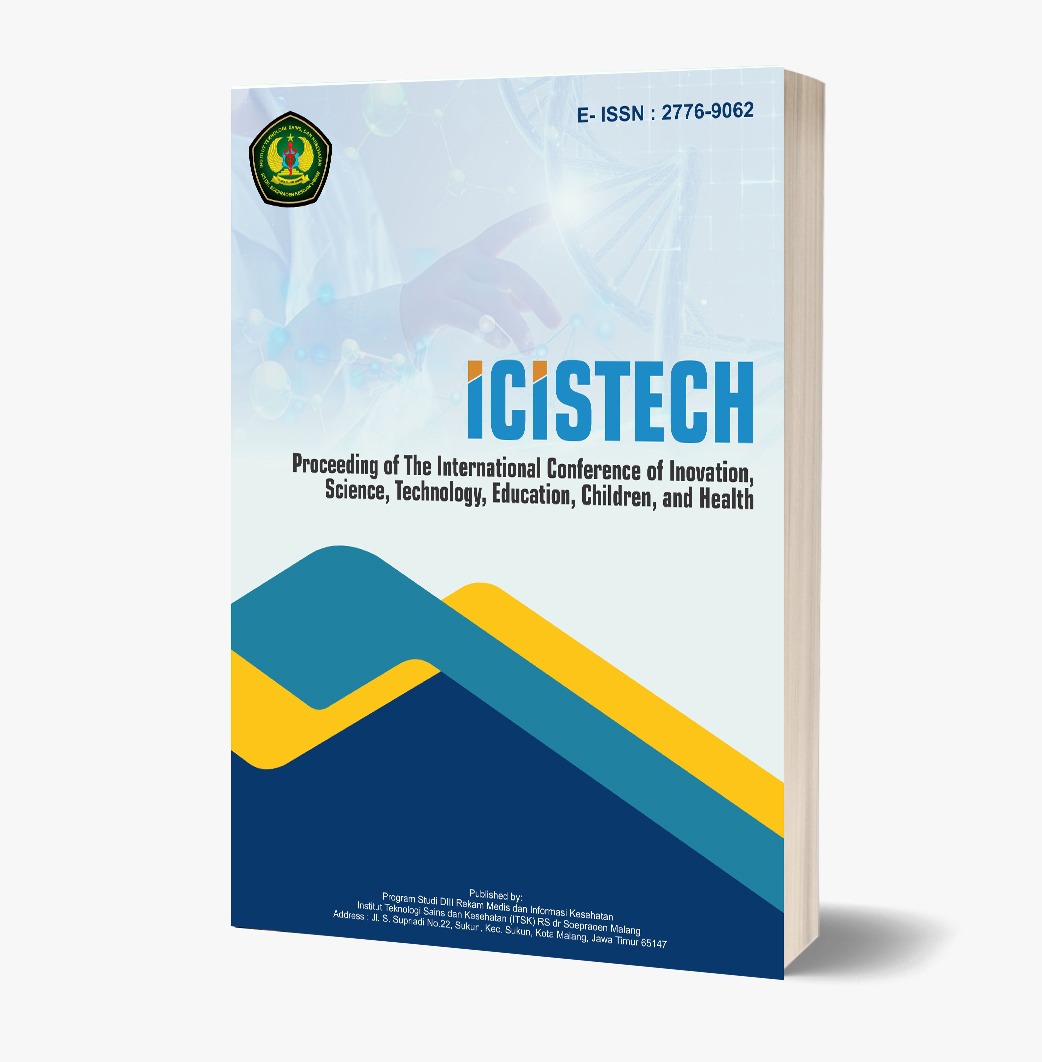Use of Wearable Technology in Improving Children's Health: Implementation and Impact on Healthy Lifestyles
DOI:
https://doi.org/10.62951/icistech.v5i1.172Keywords:
Child health, Health education, Healthy lifestyle, Physical activity, Wearable technologyAbstract
Wearable technologies, such as smartwatches and fitness trackers, have gained popularity in recent years as tools for monitoring health. These devices are increasingly used not only by adults but also by children, offering a promising approach to promoting healthy living habits. This study investigates the impact of wearable technology on improving healthy living habits in children, specifically focusing on physical activity levels and dietary behaviors. The research employed a quasi-experimental design and involved 150 children aged 8 to 12 years who wore wearable devices to track their physical activity over a 6-month period. The data was collected through physical activity measurements, dietary assessments, and healthy lifestyle surveys conducted both before and after the intervention. The results demonstrated a significant increase in the children's physical activity levels, with a notable reduction in sedentary behaviors such as prolonged sitting. Furthermore, children using wearable technology showed improvements in their dietary choices, opting for healthier food options more frequently. Parents also reported a positive change in their children’s attitudes towards health, with an increased awareness of the importance of maintaining a healthy lifestyle. These findings suggest that wearable technology can be an effective tool in promoting physical activity and healthy eating habits among children. The study highlights the potential of integrating such technologies into children's health education to support the development of better lifestyle behaviors. Given the positive outcomes observed, it is recommended that policymakers, educators, and health professionals consider incorporating wearable devices into public health initiatives aimed at improving children’s health and well-being. Further research could focus on long-term effects and explore additional benefits of wearable technology in enhancing various aspects of child development.
References
Anderson, M. A., Anderson, E., & Parker, G. (2022). Operation management for dummies. John Wiley & Sons, Inc.
Andi Saputra, W., Ayu Puspandari, D., Faozi Kurniawan, M., Ilmu Kesehatan Masyarakat, D., Kedokteran, F., Masyarakat, K., Keperawatan, D., & Gadjah Mada, U. (2019). Evaluasi pengadaan obat dengan e-purchasing melalui e-catalogue di Rumah Sakit Jiwa Grhasia Daerah Istimewa Yogyakarta tahun. Jurnal Kesehatan Masyarakat Indonesia, 08(03).
Barraclough, A., Clark, M., & Quick, J. D. (2012). Managing procurement, management sciences for health, managing access to medicines and health technologies. Management Sciences for Health.
Basu, R. (2017). Managing project supply chains. https://doi.org/10.4324/9781315249902
Boswell, D., Conradie, S., Keshave, B., Khan, T., Mngadi, S., Tebeile, L., Van Huyssteen, M., Bheekie, A., & Kiewiets, D. (2018). Medicine runners: A community-initiated solution to chronic medicine access in underserved communities. SA Pharmaceutical Journal, 85(4).
Cresswell, J. W. (2008). Qualitative procedures. In Research design: Qualitative, quantitative, and mixed methods approaches.
Fallis, A. G. (2013). John Cresswell - Research design. In Journal of Chemical Information and Modeling. https://doi.org/10.1017/CBO9781107415324.004
Gunasekaran, A., & Ngai, E. W. T. (2008). Adoption of e-procurement in Hong Kong: An empirical research. International Journal of Production Economics, 113(1). https://doi.org/10.1016/j.ijpe.2007.04.012
Imron, M. (2010). Manajemen logistik rumah sakit. CV Agung Seto.
Kuglin, F. A. (2015). Pharmaceutical supply chain: Drug quality and security act. https://doi.org/10.1201/b18697
Monczka, R. M., Handfield, R. B., Giunipero, L. C., & Patterson, J. L. (2016). Introduction to purchasing and supply chain management. In Purchasing and supply management.
Naumova, N. N., & Kharisova, F. I. (2020). The order of organization of supply chain management of medical industry activity in the Republic of Tatarstan. International Journal of Supply Chain Management, 9(4).
Njuguna, P. M., Arani, W., & Onyara, V. (2021). Influence of supply chain management strategies on performance of medical supply chain organisations in Kenya. International Journal of Business Management, Entrepreneurship and Innovation, 3(3). https://doi.org/10.35942/jbmed.v3i3.210
Risa, R. S., Nuryani, D. D., & Perdana, A. A. (2020). Evaluasi pengadaan obat secara e-purchasing berdasarkan e-katalog menggunakan dana kapitasi jaminan kesehatan nasional di Puskesmas Sekampung Kabupaten Lampung Timur. Jurnal Dunia Kesmas, 9(2). https://doi.org/10.33024/jdk.v9i2.2974
Romadhon, S., & Wardoyo, R. (2021). Prioritizing drug procurement using ABC, VEN, EOQ, and ROP combination. IJCCS (Indonesian Journal of Computing and Cybernetics Systems), 15(2). https://doi.org/10.22146/ijccs.63486
Saptarisa, R., Dwi Nuryani, D., & Perdana, A. A. (2020). Evaluation of drug procurement by e-purchasing based on e-catalog using the national health insurance capitation fund at the Sekampung Puskesmas, East Lampung Regency. Jurnal Dunia Kesmas, 9(2). https://doi.org/10.33024/jdk.v9i2.2974
Downloads
Published
How to Cite
Issue
Section
License
Copyright (c) 2025 Proceeding of The International Conference of Inovation, Science, Technology, Education, Children, and Health

This work is licensed under a Creative Commons Attribution-ShareAlike 4.0 International License.













